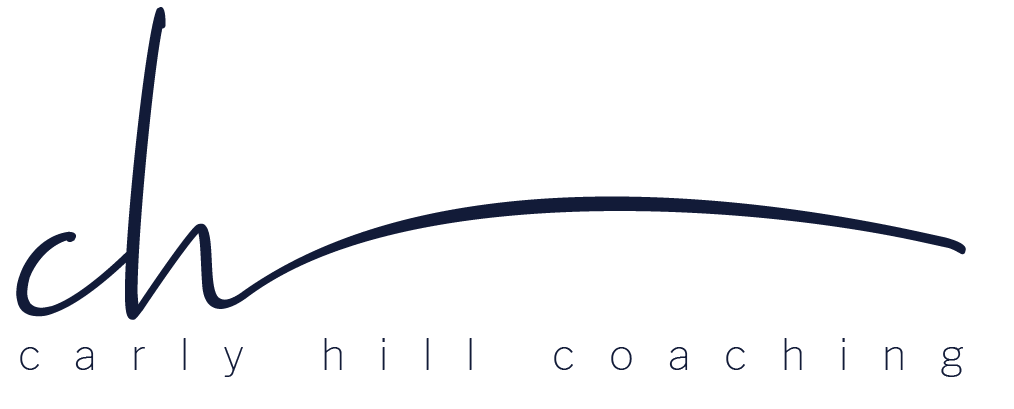Carly Hill Takes you From Therapist to Coach with 3x the income
Transitioning from One-on-One Vs Group Coaching

FSDAVCFEBFEVSDDVFSD

FSDAVCFEBFEVSDDVFSD

FSDAVCFEBFEVSDDVFSD
Scaling Your Coaching Model
Group Coaching Benefits for Therapists

Making the shift from one-on-one sessions to group coaching can be a transformative change for therapists. The main advantage lies in scalability. Group coaching allows you to reach more clients in less time while maintaining a supportive and structured environment. By facilitating group dynamics, therapists can build a sense of community that encourages peer support, which can be highly beneficial for personal growth and professional development.
Furthermore, group coaching provides a more sustainable income stream. When compared to traditional one-on-one coaching, the group model allows you to serve more people at once, maximizing your earnings potential without sacrificing your time.

How to Design and Deliver Effective Group Coaching
Designing a group coaching program requires careful planning. Start by identifying the key outcomes you want for your participants. The goals should align with the needs of the group while being specific enough to ensure measurable results. Establishing clear objectives helps guide the sessions and gives participants something tangible to work toward.
Next, structure your sessions in a way that encourages active participation. Incorporating group discussions, interactive exercises, and peer feedback can keep clients engaged and make the experience more dynamic. The role of the therapist is to facilitate the group’s growth while maintaining a balance between guidance and freedom, ensuring each member feels heard and supported.
Do not forget the importance of creating a safe and trusting environment. That will bring you more and more clients. This will allow clients to open up, share their experiences, and benefit from the collective wisdom of the group. Properly setting boundaries, encouraging respectful communication, and managing conflict is essential for a successful group coaching experience.
Overcoming Common Challenges in Group Coaching

Transitioning from one-on-one coaching to group coaching comes with its challenges. One common issue is balancing the needs of different participants. In a group setting, some clients may require more attention than others, and it is important to find ways to support everyone without neglecting anyone. Consider using breakout sessions or peer support groups to manage varying needs effectively.
Another challenge is maintaining group cohesion. It can be difficult to foster a strong group dynamic when participants come from different backgrounds or have varying levels of experience. One way to ensure cohesion is by establishing a shared vision at the start of the program. Regular check-ins and group activities can also help build rapport and keep the group engaged.

Moreover, some therapists may struggle with facilitating group discussions, especially when clients are hesitant to speak up. It’s important to set clear expectations for participation and create an atmosphere where everyone feels comfortable contributing. Setting group norms, like respectful listening and confidentiality, can help foster trust among participants. Coaches can also rotate discussion leaders or assign small group activities to ease quieter clients into speaking. Over time, as clients experience the supportive dynamic of the group, they may naturally become more willing to share their insights. Providing prompts or starting discussions yourself can help encourage quieter participants to engage.
Another potential challenge is time management. Group coaching sessions can easily go off-track if there is no clear agenda. Effective time management ensures that each participant gets the attention they need while staying on schedule. Using tools like timers and structured formats can help maintain a productive pace throughout the session.
How Carly Hill Coaching Helps Therapists Transition
Carly Hill Coaching provides therapists with the resources and guidance needed to successfully transition to group coaching. Through specialized programs, therapists can learn how to create scalable coaching models, design impactful group sessions, and manage group dynamics effectively. Carly Hill’s expertise in the coaching field equips therapists with the tools they need to thrive. You will learn how to prepare for these sessions before launching them for your clients.
The programs offered by Carly Hill Coaching are designed to address the specific needs of therapists who want to scale their practice. The step-by-step approach guides participants in transitioning smoothly from one-on-one coaching to group formats, focusing on practical skills like group facilitation, client engagement, and structuring sessions for success.
With Carly Hill Coaching, therapists gain access to a supportive community of like-minded professionals. The group coaching model promotes peer learning and allows therapists to share their experiences and challenges, making the transition process easier and more effective. Your clients are sure to love the process.
Key Considerations When Moving to Group Coaching
When transitioning to group coaching, one of the first considerations is the size of the group. Too few participants can limit the potential benefits of peer support, while too many may lead to a lack of personal attention. It’s important to find a balance that allows for meaningful interactions while still ensuring the group remains manageable.
Another consideration is pricing. Group coaching typically involves a lower cost per participant than one-on-one sessions, but you’ll need to ensure that you’re still providing value to each individual. Developing tiered pricing options or offering additional resources can help create value for clients while scaling your income.
Technology is another factor to consider when implementing group coaching. Virtual coaching has become increasingly popular.


For clients who cannot attend in-person sessions, group coaching is a great option. Investing in the right platform for your group can help create a more professional and streamlined experience. Finally, it’s essential to consider the long-term sustainability of your group coaching program. While the initial transition can be challenging, maintaining momentum and continuously improving the experience will help you build a loyal following. Seek feedback regularly, adjust your approach when necessary, and continue investing in your personal development as a coach.
Designing Scalable Coaching Models for Therapists
Scalable coaching models allow therapists to expand their reach without sacrificing quality. By creating repeatable processes and utilizing group settings, therapists can maximize their impact. Offering tiered service levels, like self-paced courses alongside live group sessions, provides clients with varying levels of support based on their needs and budgets. Coaches can also pre-record foundational content to cover common topics, allowing live sessions to focus on personalized guidance. This approach also makes it easier to offer different pricing options, such as membership programs or packages that give clients flexibility.
One of the key strategies for creating scalable coaching models is streamlining your processes. For example, standardizing intake forms, creating templates for group activities, and developing automated systems for client communication can save time and ensure a consistent experience for all participants. Using a client portal or online platform can centralize resources, session recordings, and progress tracking. This way, clients can access materials anytime, reinforcing their learning between sessions. Regularly reviewing and refining these systems ensures they stay effective as your practice evolves.
Ultimately, scalability allows therapists to reach more clients while maintaining a high standard of care. By developing systems and frameworks that can be adapted to different group sizes and needs, therapists can ensure that their practice continues to grow in a sustainable way.
Creating Group Coaching Programs That Work

When designing group coaching programs, it’s important to align the content with the group’s needs and goals. Start by defining the core objectives of the program and breaking them down into manageable modules. Each module should focus on a specific skill or concept that will help participants achieve the overall goal. Consider adding a variety of delivery methods to your group coaching sessions.
While live sessions are essential for building rapport, incorporating resources such as worksheets, pre-recorded videos, and reading materials can improve the learning experience and provide clients with tools to continue their progress outside of the sessions. One of the most effective ways to create a successful group coaching program is by focusing on accountability. Encourage participants to set goals and share their progress with the group.

Overcoming Coaching Obstacles in Group Coaching
It’s inevitable that you will face challenges as you transition from one-on-one coaching to group coaching. One of the most common obstacles is managing diverse personalities and needs. With careful preparation, clear expectations, and consistent communication, you can address these challenges effectively and ensure your group coaching sessions remain productive. Establishing ground rules for group interaction and creating opportunities for everyone to contribute fosters an inclusive environment where each person feels heard and respected. Encouraging mutual support within the group also helps clients feel more comfortable, making the coaching process more dynamic and collaborative.
Another challenge is staying organized. Group coaching involves a lot of moving parts—tracking client progress, managing session logistics, and providing ongoing support. Using tools like scheduling apps, project management software, and client portals can help you stay on top of everything while delivering a smooth experience for participants.

Carly Hill
LCSW; Author
Stay Up-to-date with our Content
Subscribe to learn more about our mission!
Stay Up-to-date With Our Content
Subscribe to learn more!
Free Resources
Free Resources
Copyright © 2025 Carly Hill Coaching LLC


